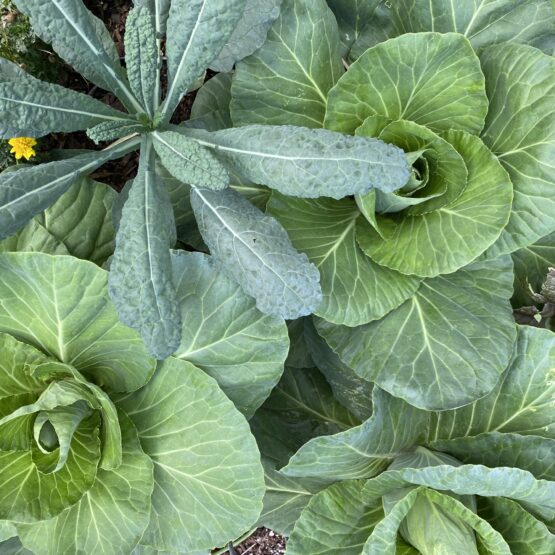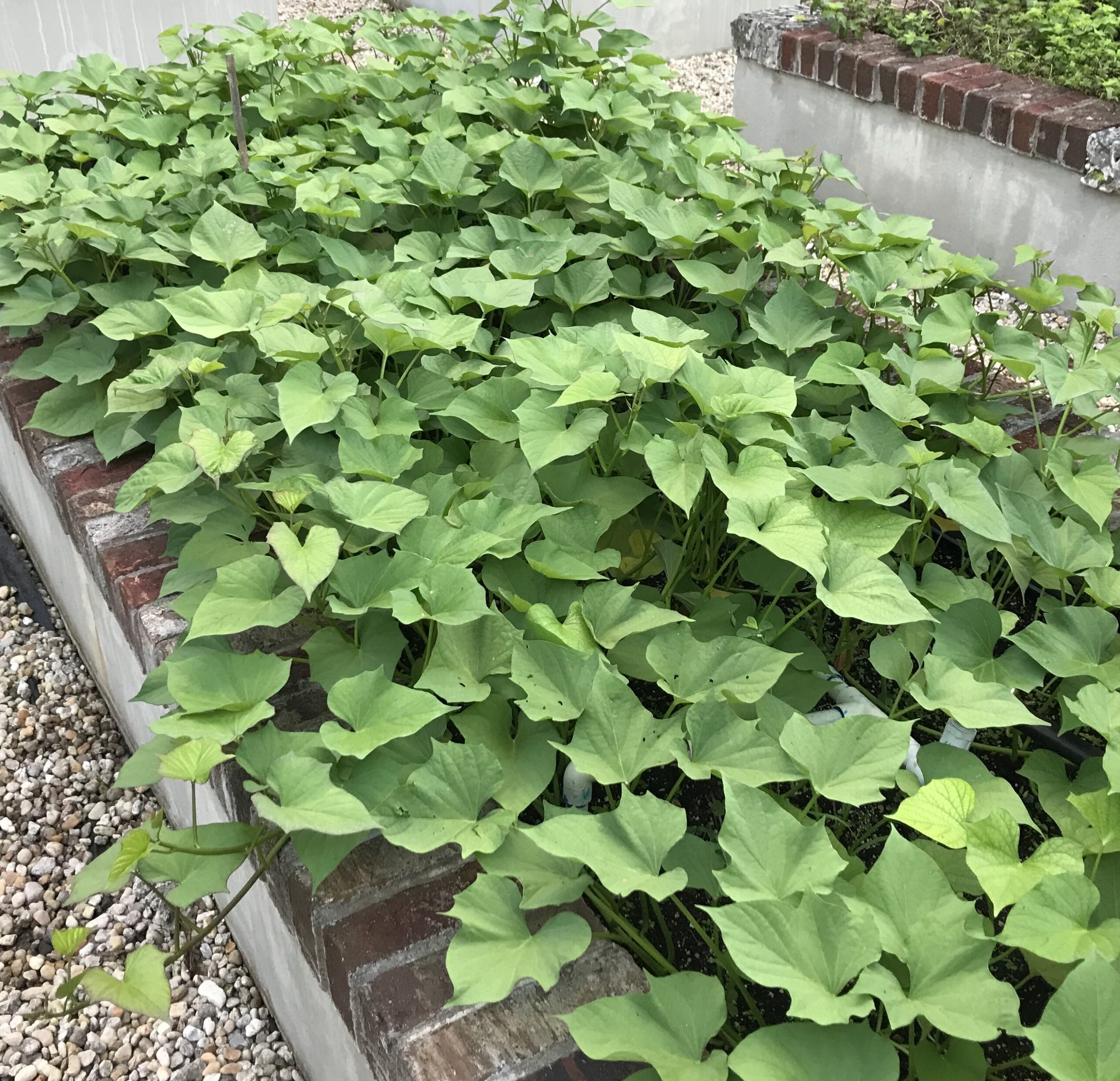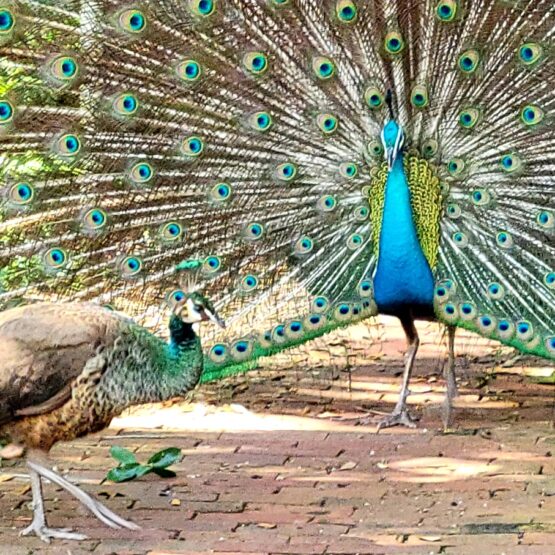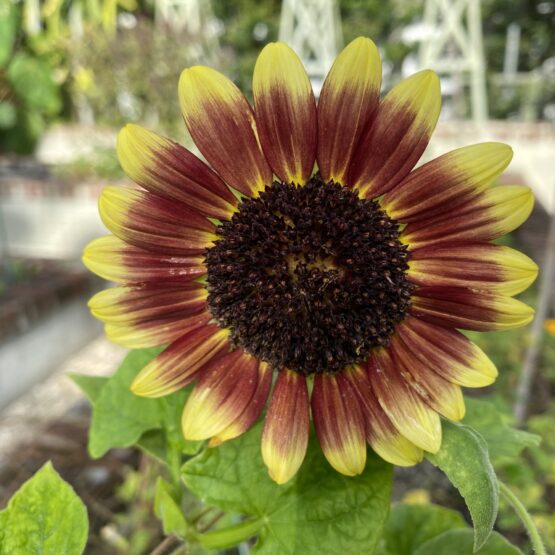Fall 2019
August and September – hereafter referred to as summer months – are sooo hot in South Florida, and in our garden there is very little growing to harvest and cook (besides some okra and a few herbs). The remainder of the spring vegetables have finally given their last breath (would you believe we harvested a few leeks and some chard in August?!); the sunflowers are wilted and gone; the herbs are either bid farewell to or hanging tough through the summer heat depending on their durability. We said goodbye to the sorrel, basil and tomatillo plants recently, sad to say, they just gave out.

Leeks in the summer!

Hot and tired basil!
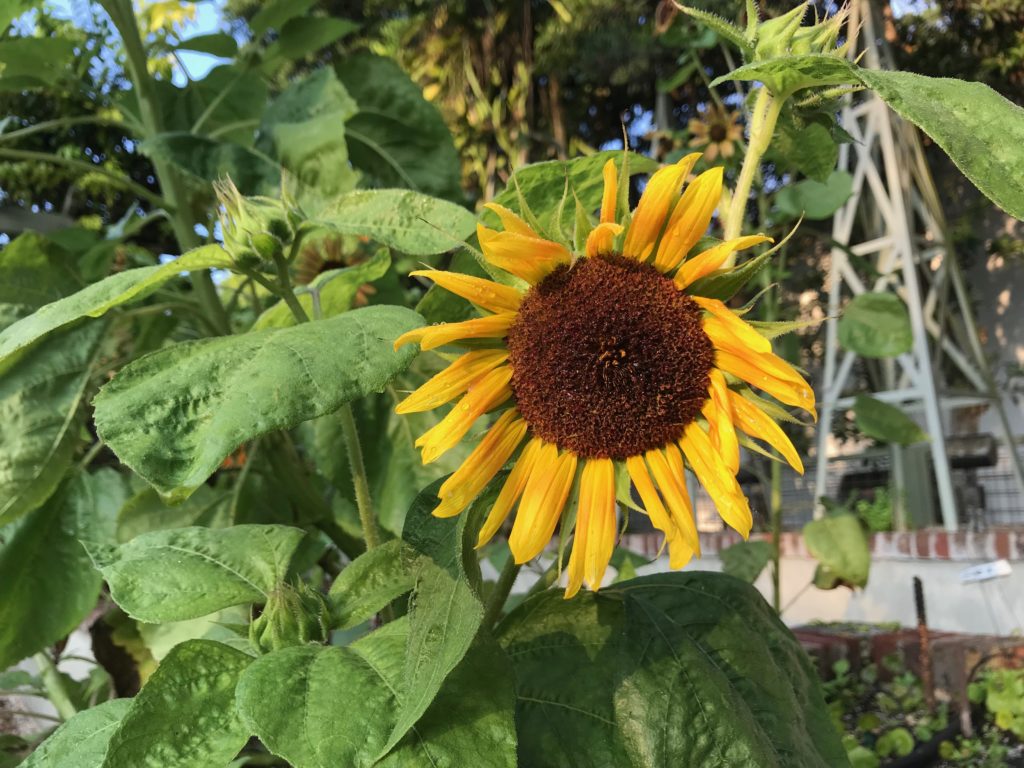
Fading sunflower
And yet the beat goes on! Preparing for the fall, each week we are solarizing a few more beds and pretty much keeping the weeds under control (no small feat with all this summer rain!). Kudos to all our persevering members who give of the time and energy and (much) sweat during the summer. Seems we’ve all accepted that there are seasonal cycles and our work just has to be consistent and steady. What a great group!
We are also engaged in:
- Reviewing how our plantings went over the last season, how the harvest was used (or not), and planning for this coming season accordingly. It’s interesting that certain seasons will have different results; a crop that was a hit with our gardeners two years ago, such as sorrel, was hardly touched this past season. Interests and tastes change, which is hard to plan for in advance! We also experimented with some new crops, as well as old ones we’d abandoned but decided to give another shot (especially since we are redoing our growing medium), and for the most part they produced well – e.g. onions, beets, cucumbers, and a variety of flowers including gaillardia and gomphrena.
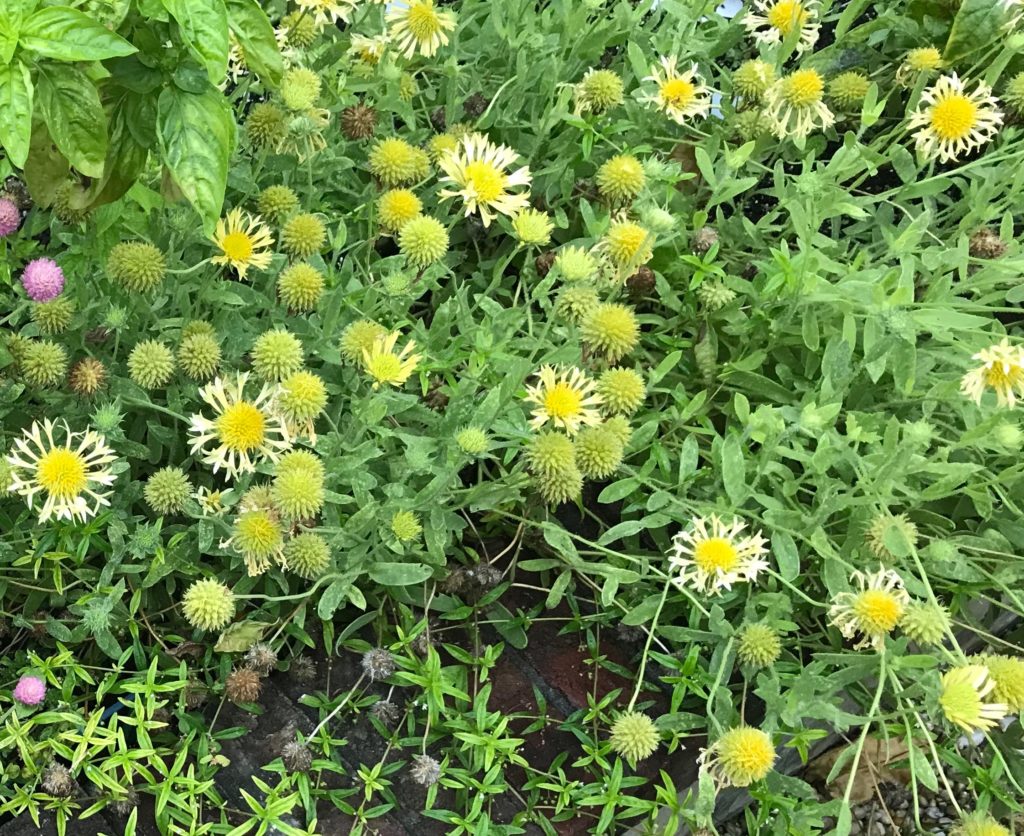
Yellow gaillardia – aka “blanketflower”

“Hot pink” gomphrena – aka “globe amaranth”
- Doing preliminary prep work on a few of our raised beds, i.e., due to lack of proper drainage, we are continuing to dig out some of our raised beds and replacing them with a layer of rock, porous cover and then new growing medium. This is tedious (and hot!!!) work, so it’s going slowly. You can find a more detailed explanation of this approach, as well as how and why we are solarizing the majority of our beds, in last year’s post: Fall Season – New Gardening Strategies.

Porous cover over rock layer
- Composting, composting and more composting! We’ve expanded our compost pile – inspired by the incredible botanist/avid gardener we met in Maine this summer, who keeps a giant compost pile “cooking” in the summer. He said, “I think I love growing compost as much as I love growing veggies!” (And what an impressive crop of veggies he has as well!) More on composting here: Compost It!
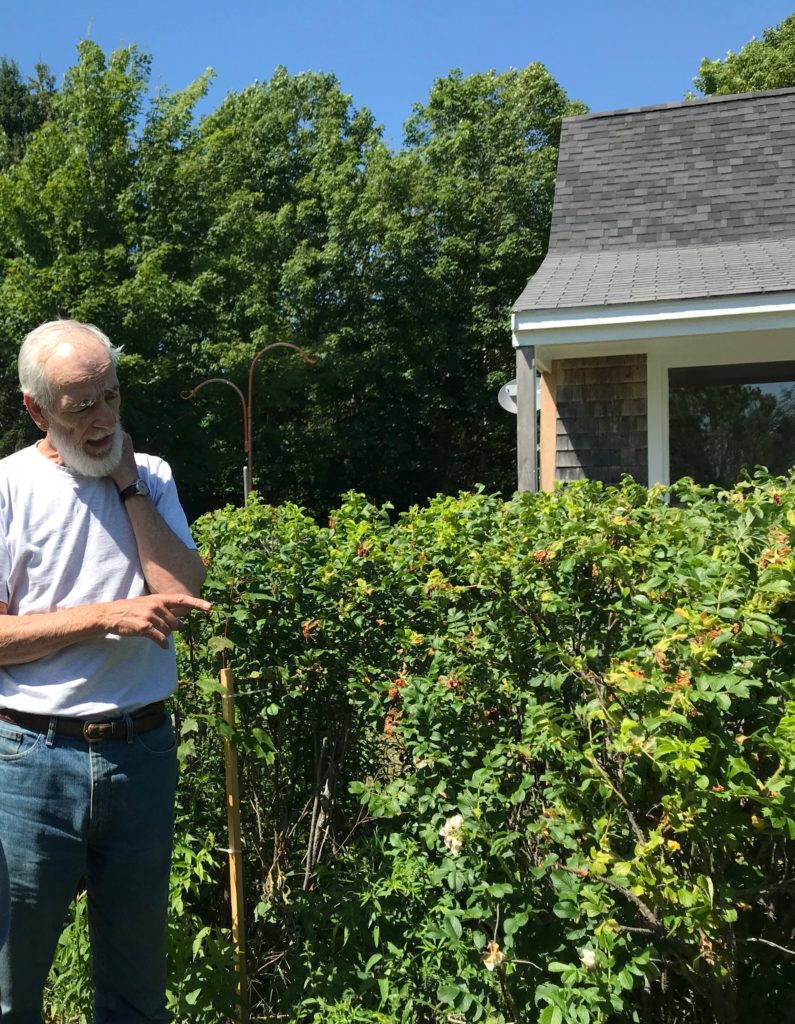
Our new gardening friend in Maine, what an expert!

Maine compost pile, inspiration to expand ours – squash is allowed to thrive
- Doing a seed inventory is a crucial part of preparing for the fall, as it helps us determine what needs to be purchased for the start of the season. We take into account which varieties from specific seed companies have done well (or not), how well suited the crop was to our climate/conditions, the typical longevity of certain types of seeds, and how much interest there actually was in the harvest of each crop.
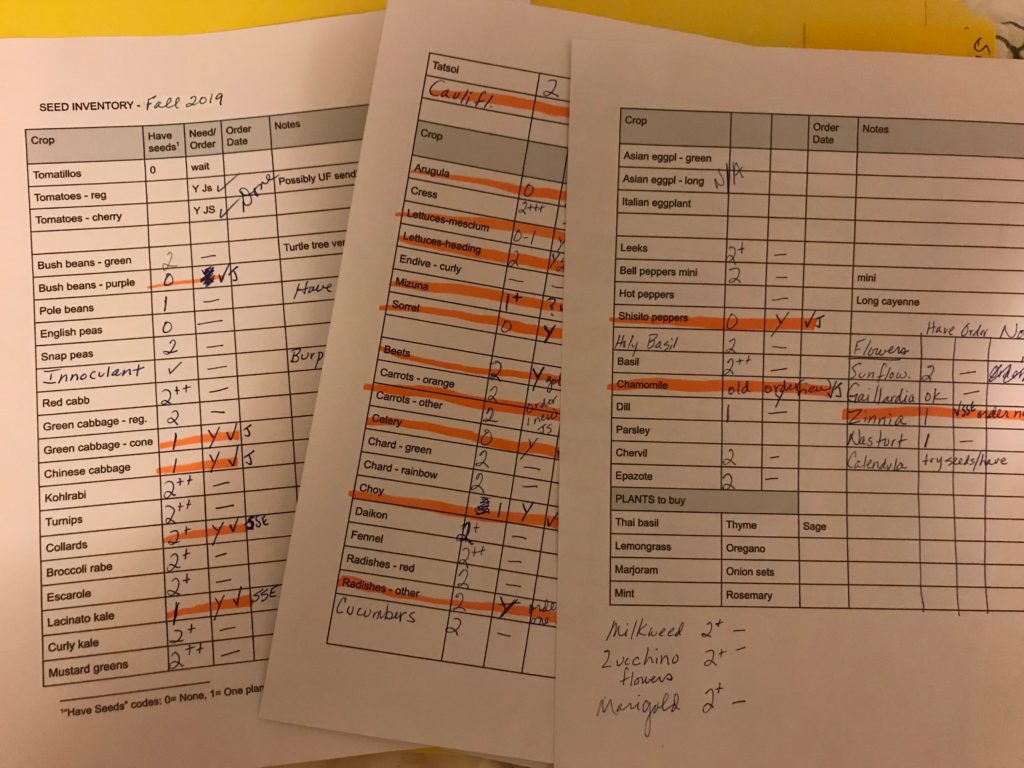
Fall 2019 Seed Inventory
- Tidying up our seed collection. We definitely store and use our seeds across multiple seasons. As you may know, some last longer than others; down-time from planting in the summer is a good time to sort them all out.
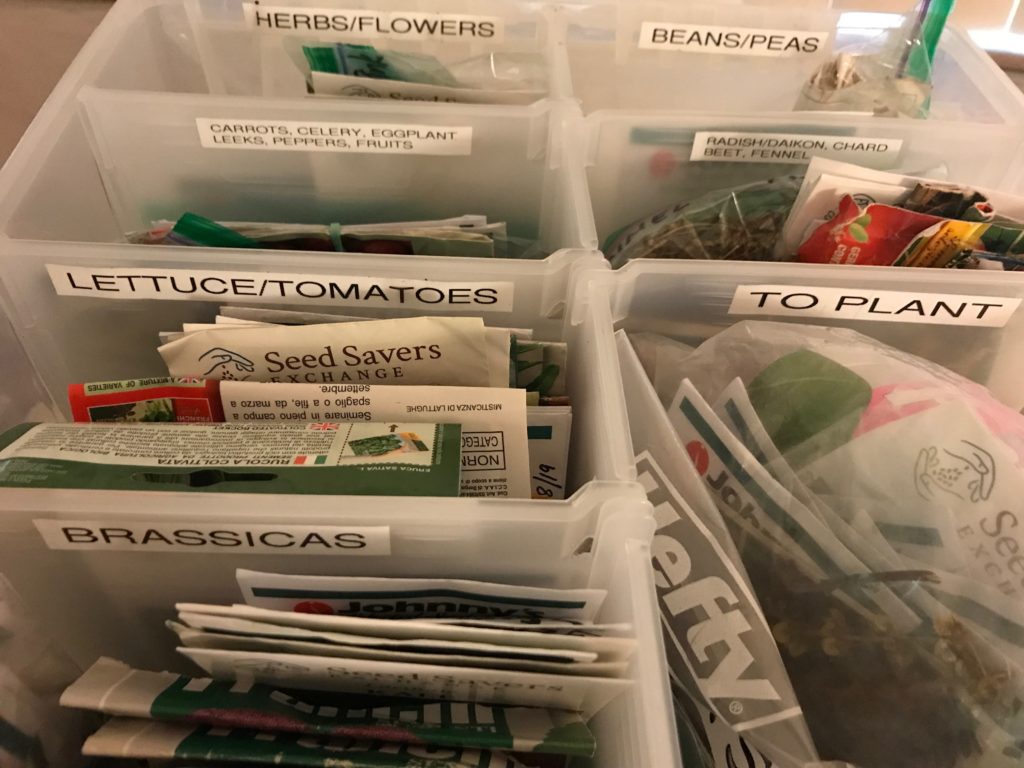
Keeping it organized!
- Saving and storing our own seeds from the past season’s and this summer’s harvest, e.g. fennel, mustard, sweet and hot peppers, papaya, basil, calendula, etc. (We use our homegrown fennel and mustard seeds for cooking as well, but that’s another story!)
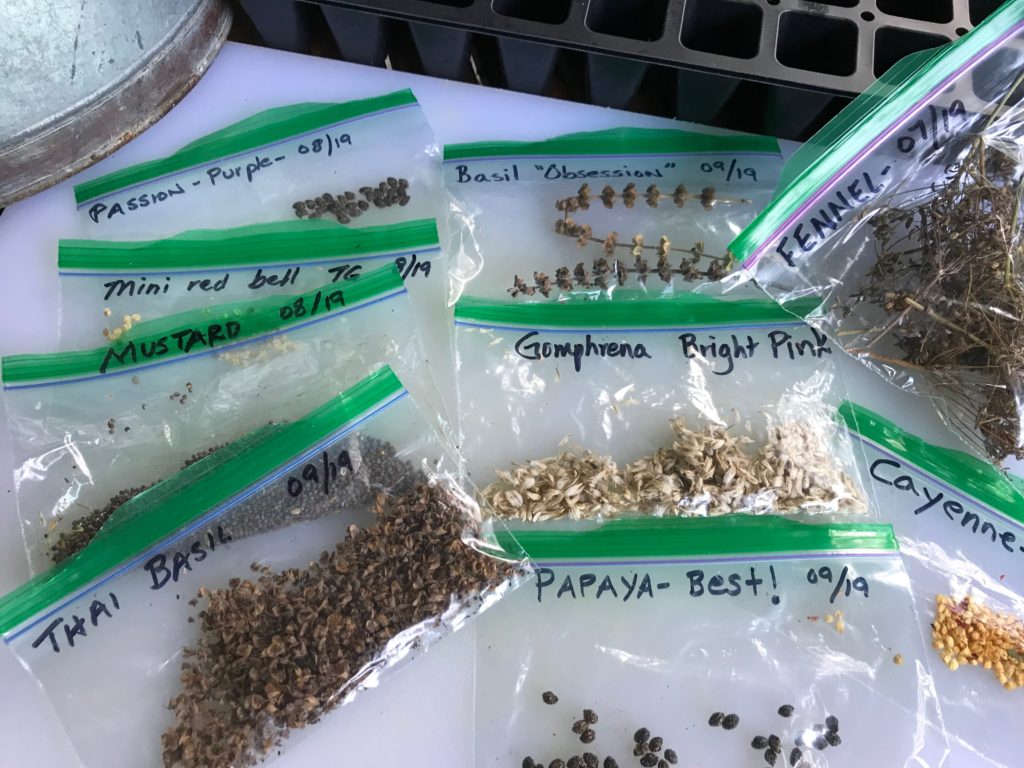
It’s thrilling to collect our own seeds!
- Ordering seeds, in the sequence that we need to plant them (ie, we’ve got our tomato and pepper seeds ready to go). Check out our post, It’s Time to Order our Fall Seeds!
- Gathering our potting medium for starting seedlings in – we bought some last week from our trusted Tree Amigos Nursery just to get us going. If we like it, we will likely mix up a similar stock of our own.
- We also bought some new seedling trays from them. We wanted to go with a smaller sized cell than our (mostly worn out) previous trays. So to be precise, we’re switching from 3 inch diameter cells to 1 3/4 inch diameter. This way we will plant just one seed per cell (rather than 2 or 3) which will make for much easier transplanting! We tried this “single plant per cell” with a tray we inherited last season and it worked well.

New trays, new soil, ready to go!
- Planting the early seeds in trays that need warmer soil for germination – tomatoes and peppers. We are forgoing eggplant this fall as our garden has just not been a good producer of it this time of year.
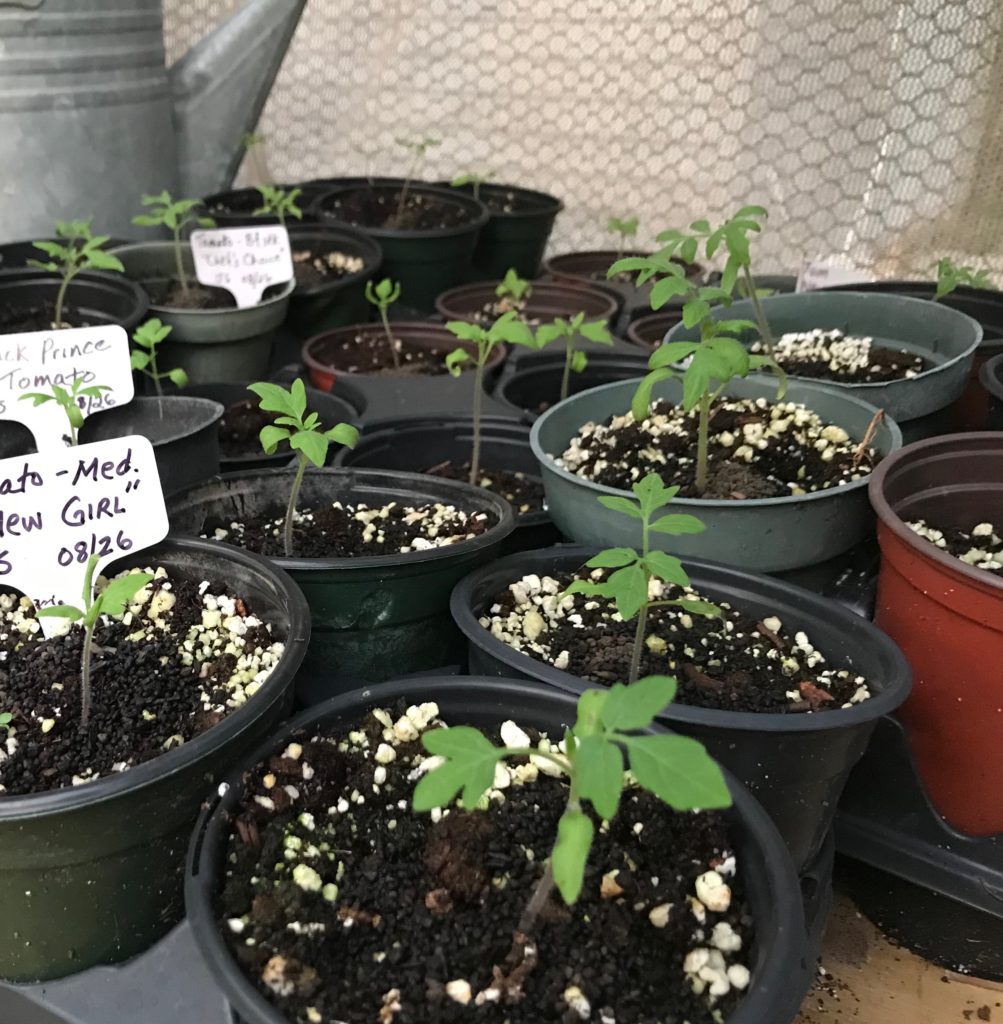
Getting a jump start on tomatoes
- Gathering & refurbishing supplies – summer is a good time to clean up, recycle supplies, replenish stocks such as plant labels, pots, gloves, bamboo stakes, fertilizers, organic pesticides, etc. This organization will support our busy beginning-of-the-season preparations and plantings.
- So summer, though we are growing next-to-nothing, is no time to slack off! Gotta be preparing for the fall (i.e. October) so we’re ready when the weather is – can’t wait!!!
You Might Also Like...
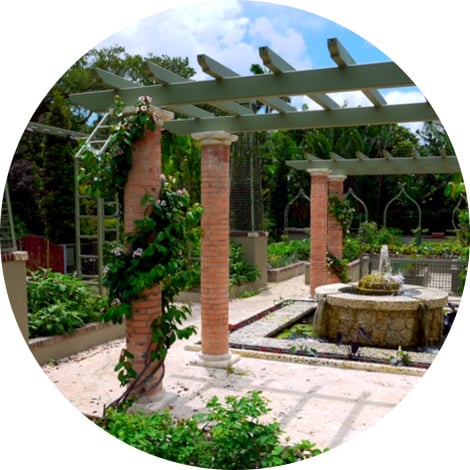
We are a small group of South Floridians who share a love of organic gardening, cooking and leading a healthy lifestyle. We garden together in Miami on a weekly basis year round, and enjoy the labor, harvest and feeling of community that this provides us. We are learning together what it means to grow food in South Florida, with our unique climate and seasons, which are so different than the rest of the country. This website is a venture in sharing information and resources relevant to gardening (and enjoying the harvest) in our South Florida environment. We hope you will find it useful!
